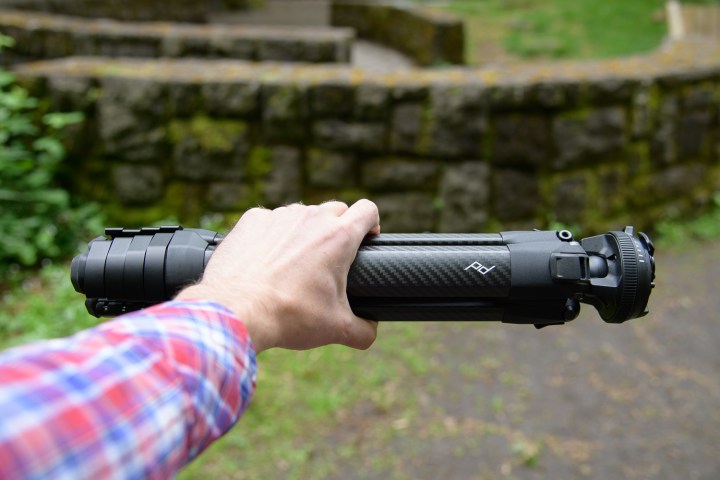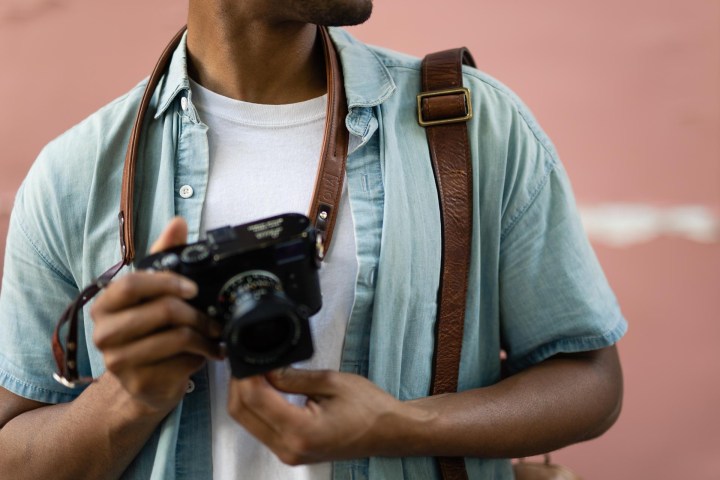A good camera and a thirst for exploring is a solid start for a travel photographer. In this day and age, the camera you use is likely packed with plenty of features, but having a few extra tools at hand certainly helps to achieve better results with your travel photography. From durable tripods to high-end lens filters, there’s a range of accessories to carry with you while on the move.
- The best tripod for travel photography: Peak Design Travel Tripod
- The best camera bag for travel photography: Lowepro ProTactic BP 450 AW II
- Best filters for travel photography
- Best camera strap for travel photography: ONA Oslo
- The best portable hard drive for travel photography: WD My Passport SSD
- Best weather protection for travel photography: LensCoat RainCoat
If your travel bag is looking a little empty, and your camera’s feeling a little lonely, here are the best accessories for travel photography in 2019.
The best tripod for travel photography: Peak Design Travel Tripod

Historically, tripods have been an awkward travel companion. They’re bulky and always seem to take up more space than they need to. Thankfully, Peak Design saw the frustrations of many travel photographers and decided to create a solution. They didn’t disappoint.
Aptly named the Travel Tripod, Peak Design created a tripod that’s both compact and versatile. The center column is triangular in shape, which allows the three legs to be packed tightly against it. If you’re on a budget, you can purchase an aluminum version of the Travel Tripod. But if you want to go lighter in weight, Peak Design has designed a carbon fiber version as well — although it will burn a bigger hole in your wallet.
It highlights its versatility through its ability to hold big DSLRs and heavy telephoto lenses, plus even smartphone photographers can use their device by attaching it to a specialized phone mount, which hides away within the center column.
Brought to life by a wildly successful Kickstarter campaign that raised over $12 million, the Travel Tripod should start shipping in late 2019. You can preorder one now from Peak Design.
The best camera bag for travel photography: Lowepro ProTactic BP 450 AW II

Keeping your gear safe and secure, while not compromising on comfort, is imperative for travel photography. The Lowepro ProTactic ticks all the right boxes for photographers. It’s capable of holding one or two pro cameras, including space for a telephoto lens attached to the body. If you’re shooting a range of perspectives, this camera bag is perfect as it allows up to eight additional lenses to be packed into it. Photographers who work on the go can also enjoy room for a 15-inch laptop, as well as a tripod and flash units when needed.
It’s designed to keep your gear safe in all climate conditions and comes with a built-in weather cover. When it comes to accessibility, the Lowepro ProTactic scores high. It has four access points at the top, sides, and rear, allowing you to get to your gear quickly and ensuring you never miss a shot!
Best filters for travel photography

A travel photographer needs to be prepared for any lighting situation, and that means carrying the right filters. A circular polarizer (CPL) and a good set of neutral density (ND) filters are key to giving your travel photos some extra punch. Here are a few of our favorites.
Breakthrough X4 ND Filter: The Breakthrough Neutral Density (ND) filter is available in three stops, six stops, and ten stops of light reduction. Unlike cheaper filters, the Breakthrough has little impact on color reproduction. This means you won’t spend as much time in post-production, adjusting the white balance and color — saving you valuable time!
Tiffen Circular Polarizing Filter: Created for the travel photographer on a budget, this inexpensive polarizing filter can still do an excellent job. It will add more saturation to a blue sky and remove and enhance reflections.
Lee Filters ND Grads: If you’re not one for HDR (high dynamic range) photography, a graduated neutral density filter is perfect for your landscape travel photography when you need to balance out a bright sky with a darker ground. From Lee Filters, this ND grad come in sets of three and offer both soft and hard transitions. When using the filters, you can expect to still see sharp and colorful photographs across the board.
Hard transition:
Soft transition:
Best camera strap for travel photography: ONA Oslo

If having your camera around your neck is important, then you need a camera strap made with premium quality in mind. The ONA Oslo is perfect for lightweight shooters who prefer to opt for a smaller point-and-shoot, mirrorless, or rangefinder camera. As is true with most ONA products, the Olso strap is made from padded leather, giving you a look that oozes style and class. The padding offers excellent support and is comfortable around the neck. So if you’re out shooting for long periods, you don’t need to worry about any overwhelming pressure on your muscles and joints. The keyring clasps are made from solid steel, and will certainly keep your camera safe and secure. It wouldn’t be an ONA if they were not protected by leather scratch guards, as sophistication remains consistent throughout the whole design.
The best portable hard drive for travel photography: WD My Passport SSD

Imagine making lots of fantastic travel photographs only for you to lose them all. That would be a nightmare! Thankfully, it’s easily avoidable through the use of a portable hard drive. When it comes to being lightweight, well-designed, and having fast transfer rates, not many are on par with the WD My Passport SSD (solid-state drive). It comes in a selection of storages capacities. Ranging from 512 gigabytes through to 2 terabytes. Naturally, the more storage you need, the more you can expect to pay for the passport. It’s compatible with Windows and MacOS, and uses USB 3.0. The WD My Passport SSD is small enough to fit in your pocket and weighs only 1.44 ounces — perfect for the nomad photographer.
Best weather protection for travel photography: LensCoat RainCoat

High-end and flagship cameras tend to come with harsh weather sealing protection. But more mid-range and budget systems are often void of this premium feature. Not to worry, there’s a solution for that. The LensCoat RainCoat is made from poly tricot material, keeping it lightweight and resistant against a variety of tough conditions. The more expensive option can protect camera and lens combinations of up to 21 inches in length. It has adjustable rear access, making it simple to control your camera. The hook-and-loop design of the bottom of the LensCoat RainCoat allows you to attach your camera to a tripod or monopod easily.
Travel photo accessories: A luxury or a necessity?
Whether you’re a budding amateur or a seasoned pro, there’s plenty of justifiable reasons to carry more kit with you on your adventure. If photography is at the center of your trip, then having the right add-ons is going to make your life much more comfortable. You don’t necessarily need all of the above accessories, and you’re able to pick and choose which of them best suit your needs and objectives. Those of you that carry a point-and-shoot and tend only to make pictures of family time may not need the added weight of a tripod, for example. However, those of you that are serious about getting a range of photographs from your travels will no doubt benefit from a more in-depth travel kit.
Do I need an ND filter for long exposures?
While you might be able to get down to a shutter speed of a 1/4-second or so without a filter during daylight, neutral density filters make long exposures much easier. Not only can you achieve exposure times measured in seconds or even minutes, but you can also get longer exposures without having to close down your aperture all the way. At very small apertures, a phenomenon called diffraction will actually reduce the resolution of your photographs. Keeping your aperture closer to the middle of its range will ensure sharper results.
Is a graduated ND better than HDR?
Before digital photography, landscape photographers relied on graduated neutral density filters to achieve even exposures in high-contrast scenes. With digital cameras, we can now shoot a bracket set of exposures at different settings to capture detail in the highlights and shadows, then merge those photos together in post into a high dynamic range, or HDR, image. Indeed, many cameras have an
So is there still a place for the old graduated ND? Well, sort of. Technically, an HDR image can yield more accurate results since a graduated filter isn’t ever going to perfectly match up with the natural brightness gradations present in a scene. However, to truly make the most of
Editors' Recommendations
- The 15 best GoPro accessories in 2024
- The best camera phones in 2023: our top 9 photography picks
- The best travel cameras
- The best iPhone camera accessories for 2022
- The best camera bags




